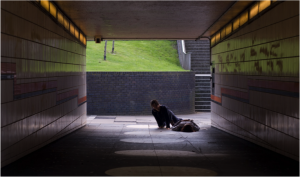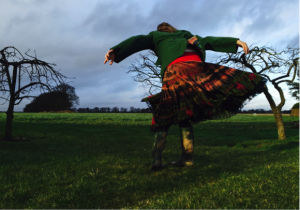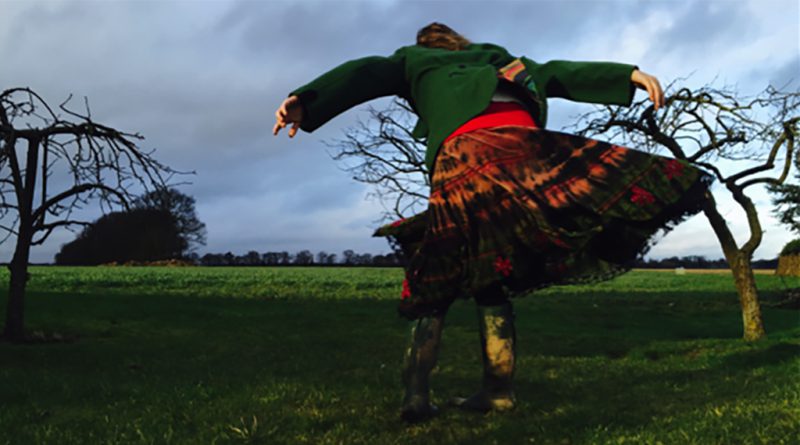Inspirations from the CultureMoves project
By Rosa Cisneros and Marie-Louise Crawley
This blog post reflects on essential ingredients for a ‘somatics toolkit’ based on the experience of the CultureMoves project. CultureMoves develops a series of digital tools and services that enable new forms of touristic engagement and educational resources. One of the outputs is an online toolkit that provides dance artists and arts professionals with access to Europeana dance content and information sources, and also serves as inspiration to help structure and rethink learning opportunities within dance education.
At first glance, CultureMoves appears to be a project that is digital heavy and reliant on technology but, while there is some truth to this, the body and the dancer’s voice is at the centre of this project. We aim to focus on how that body not only interacts with the digital technology, but also how the body engages with historical landmarks and environmental spaces.
It was useful for us to explore other, similar, toolkits that are readily available or being developed. While the CultureMoves project does not have a specific focus on somatic practice per se, the consortium has involved somatic practitioners in our LabDay explorations including Natalie Garrett Brown and Emma Meehan (from the ‘Sensing the City’ project) and Eline Kieft. During a LabDay discussion, Garrett Brown gave the example of quieter, smaller-scale dance practice in a city (as opposed to large-scale work):
- How do you take the moving, dancing body into the city landscape, and invite audiences into a different experience of the city through that type of practice?
- How might that then shift understandings of the city?
- How to articulate the value and worth of sensing the body, of a dancer telling their experience of the city?
Emma Meehan pointed to a dance artist’s engagement with a city over a long period of time, and the value of a ‘quieter chipping away…a quiet, slow progression, a listening’ rather than ‘an agenda-driven’ practice. Choreographer and C-DaRE Senior Research Fellow Rosemary Lee also spoke of the body’s sensitivity to space in her observations of audience in relation to her work, Square Dances (2011). Lee tried to enable passers-by ‘to stop for a second, to feel their bodies in space in a different way because they are witnessing dancers breathing differently…to listen to the air…to reconnect to what we really are.’

Photo Credit: Natalie Garrett-Brown
Including such perspectives in our work on CultureMoves allows us to return to the body in a very particular way and it is important for the project that a diversity of voices is present. For a project, it is all the more important to bring to that ‘virtuality’ the embodied knowledge of the dancer (and her material body), and to recognize the value of embodied knowledge interacting with technological knowledge. Indeed, the body is at the heart of this research project, and embodied research methodologies have a vital and valuable place within work exploring new possibilities for online, digital collections of cultural heritage such as Europeana.

Photo credit: Henk Kieft, 2016
For the purposes of the CultureMoves project, it would be interesting to explore how a somatic toolkit might include ingredients for navigating plural environments – material, digital and so on. The toolkit might also have ‘check in’ moments where the individual is asked to stop, reflect and be in the moment with their body, surroundings and/or the material they are engaging with and exploring and to consider what is happening within their material body as they navigate the digital world of Europeana’s digital (“immaterial”) collection, for example.
More clearly, in order to navigate the plural environments through attention to the body, one might consider the following:
- starting your work session with a body scan of how you are feeling. Sit, observe and notice any tension in the body and the mind. Place both feet on the floor and both palms on the keyboard and take three deep breaths.
- stopping and taking three deep breaths every 10 minutes.
- embodying the materials that they are seeing onscreen. For example, if viewing dance materials, you could attempt to recreate the still or moving image you are viewing online. In this way, an attempt is made to reconnect with bodily and kinaesthetic responses to what is being viewed online.
- after 30 minutes of working, reconnect with the spine through visualising each vertebrae, placing hands on the computer, palms facing down, looking straight ahead and imagining that there is space and breath extending the spine.
Engaging with cultural heritage in a consciously embodied way may require time and a willingness on the participants to reflect more on their own experiences, impressions, feelings and biases. We suggest that an individual stop and try to reflect why they are drawn to certain images over others and notice if they are having physical reactions to some content, perhaps asking themselves why they have chosen to view some material over others, or explored one thematic collection and not another. They might also make notes of their own practice and see if this resonates with, or is an extension of, their personal values and beliefs. Areturn to the body and to considering the implications of one’s actions should be considered at all times within any toolkit, especially one that is underpinned by somatic work. Technology does not have to distance the individual from the breath and self. It can be part of a three-way process which helps the individual return to their spine and breath and offer them an opportunity to reflect on their choices.
CultureMoves Research Team (C-DaRE): Sarah Whatley, Rosa Cisneros and Marie-Louise Crawley

